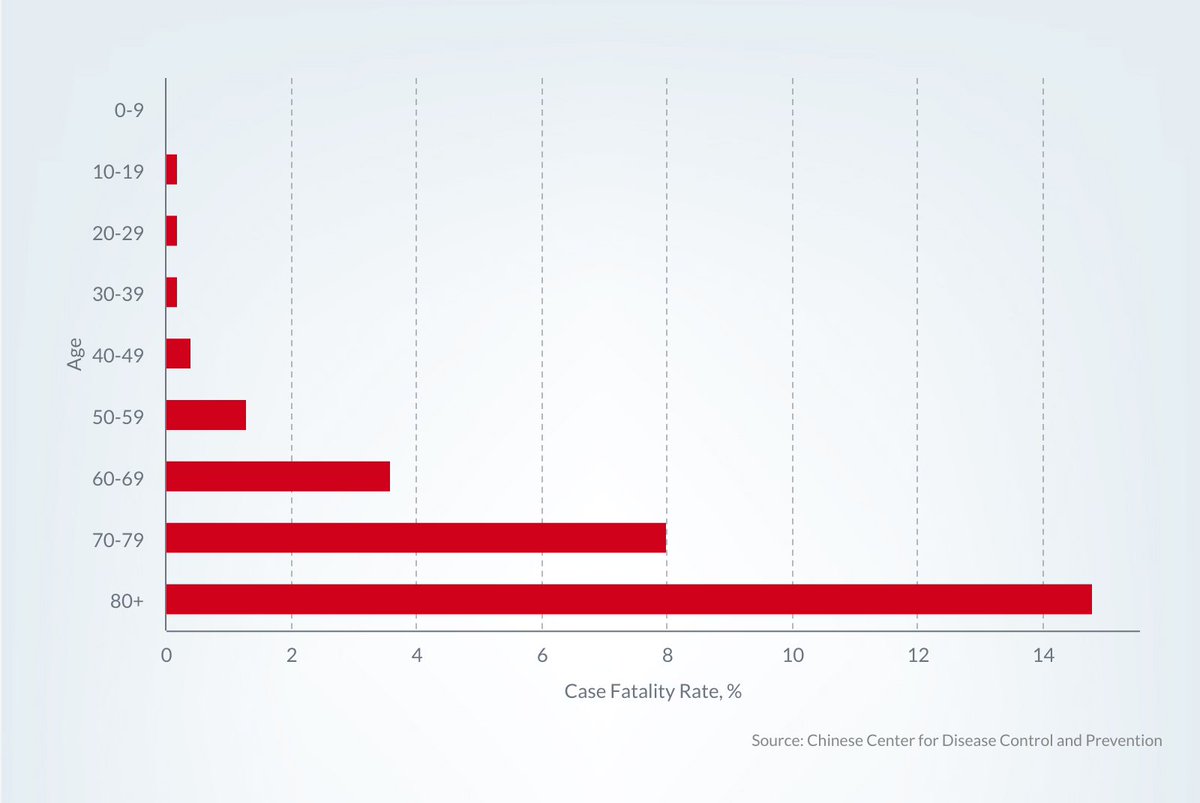
One #coronavirus question I get asked a lot: How dangerous is it? @CNN -- 1/20
You may have heard that the case fatality rate (CFR) is around 2%. This is the proportion of infections that result in death. That is: the number of deaths/the total number of infected. #coronavirus -- 2/20
A Chinese study of tens of thousands of #coronavirus cases found a CFR of 2.3%. That’s the headline, but let’s take a deeper look at what the data reveals. bit.ly/2IeNPfm -- 3/20
For example, CFRs are higher for some groups vs. others. In fact, we can break it down by age, health conditions and gender. For example, people in their 80s had a CFR closer to 15%, whereas those in their 30s had a CFR closer to 0.2%. #coronavirus -- 4/20 

Roughly 8 in 10 deaths in that study were 60 or older. Because that is a population most at risk, we must do more to protect them. #coronavirus -- 5/20
Same goes with certain pre-existing conditions. According to the study, heart disease was the most prominent risk factor in terms of CFR, followed by diabetes, lung disease and hypertension. #coronavirus -- 6/20 

And, there is even a difference when it comes to gender. Men are more likely to die compared to women. #coronavirus -- 7/20 

On the other hand, children don't seem to be affected as much. In the Chinese study, there were no deaths under 10 years old, and only one under 20. #coronavirus -- 8/20 

Overall, more than 80% of cases had mild disease. Around 14% had severe disease. Nearly 5% had critical disease and were at increased risk of dying. bit.ly/2wn3Wox #coronavirus -- 9/20
It’s also worth a deeper dive into the geography. In Hubei Province, where the outbreak started, CFR was seven times higher than the rest of China: 2.9% vs. 0.4%. Why? #coronavirus -- 10/20
Well, this may reflect “severe” pressure on the health care system there, @DrMikeRyan of @WHO said last month. #coronavirus -- 11/20
But China "has got much better at prioritizing those more likely be severely ill," Ryan added. Those are important lessons that will hopefully be applied elsewhere in the world. #coronavirus -- 12/20
When it comes to the rest of the world, because the numbers are smaller, it is harder to draw significant findings from them. #coronavirus -- 13/20
But according to @WHO’s latest numbers, the severity of the virus may be less outside of China, with 104 deaths among 7,169 confirmed cases in other countries. That is a CFR closer to 1.5% bit.ly/32IO37T #coronavirus -- 14/20
Next may be the most important point. Because so many people (~80%) exposed to coronavirus have minimal symptoms, they are harder to count. #coronavirus -- 15/20
Think about it. Most people with mild symptoms never go to the hospital and therefore don’t get tested, and more importantly don’t get counted. #coronavirus -- 16/20
Remember the case fatality rate (CFR) is the number of deaths/the total number of people infected. So, if the number of deaths stays the same but the number of infections goes up, then the overall CFR goes down. #coronavirus -- 17/20
So, for example, if there were really twice as many infections as had been officially counted, then the CFR would be closer to 1% instead of 2%. “The denominator of the equation is likely much much larger," according to @NIAIDNews Director Dr. Anthony Fauci. #coronavirus -- 18/20
As we start increased testing this week, we'll likely find many more cases of coronavirus here in the US and abroad, including mild illnesses who might have otherwise gone under the radar. #coronavirus -- 19/20
While that may dramatically increase the number of cases, it may also significantly lower the case fatality ratio (CFR), and that may be some welcome news. #coronavirus -- 20/20
• • •
Missing some Tweet in this thread? You can try to
force a refresh







